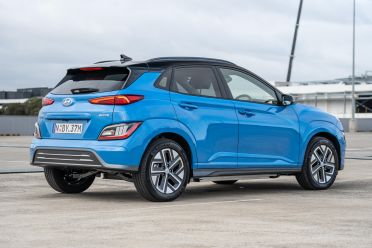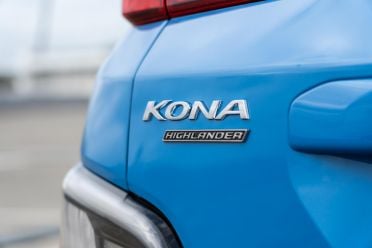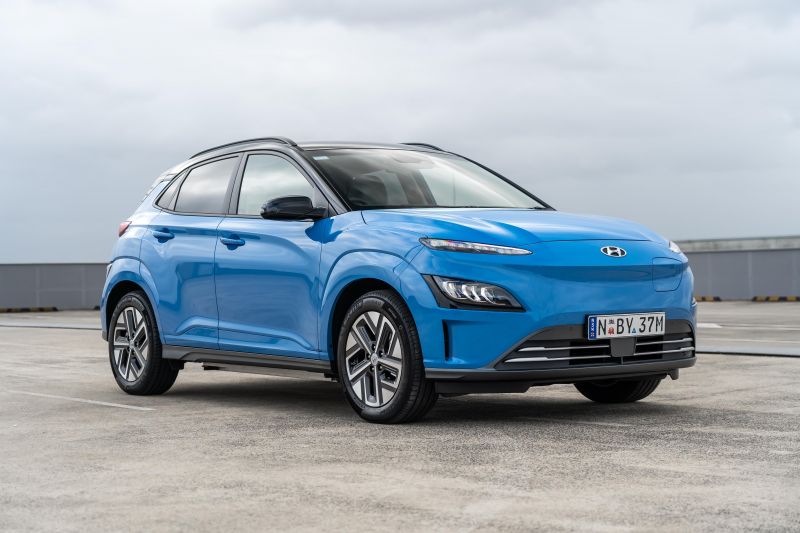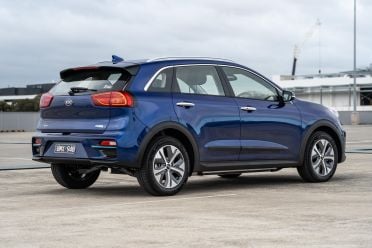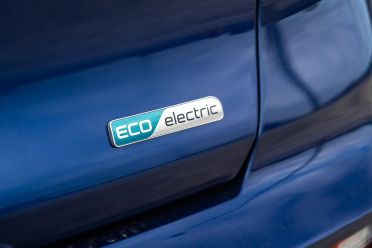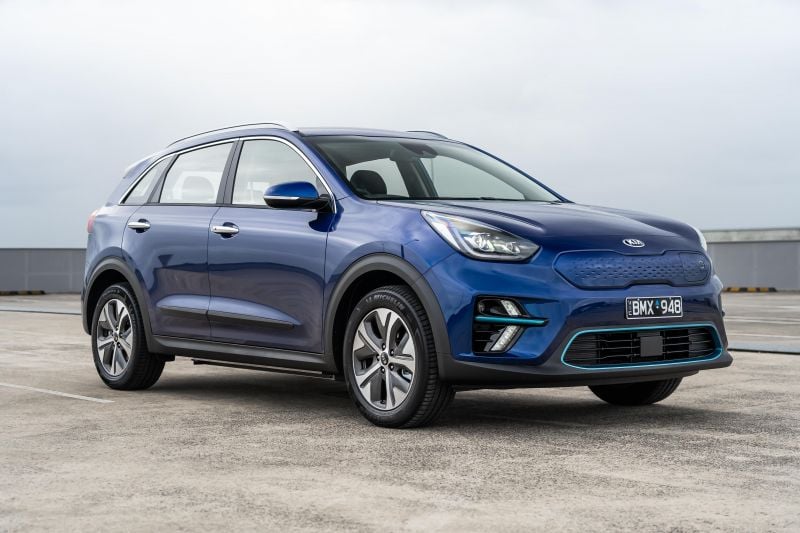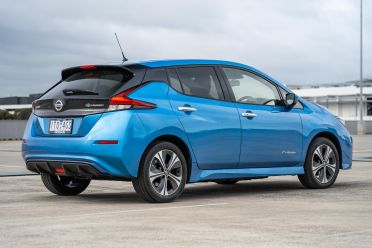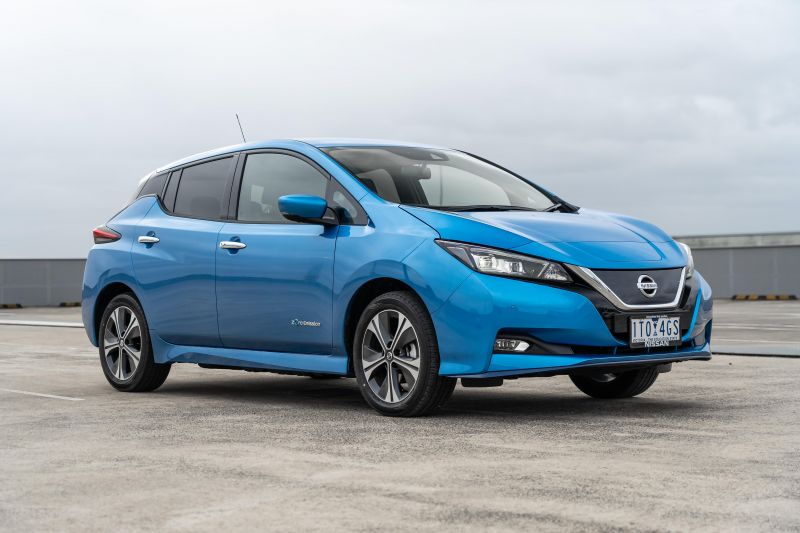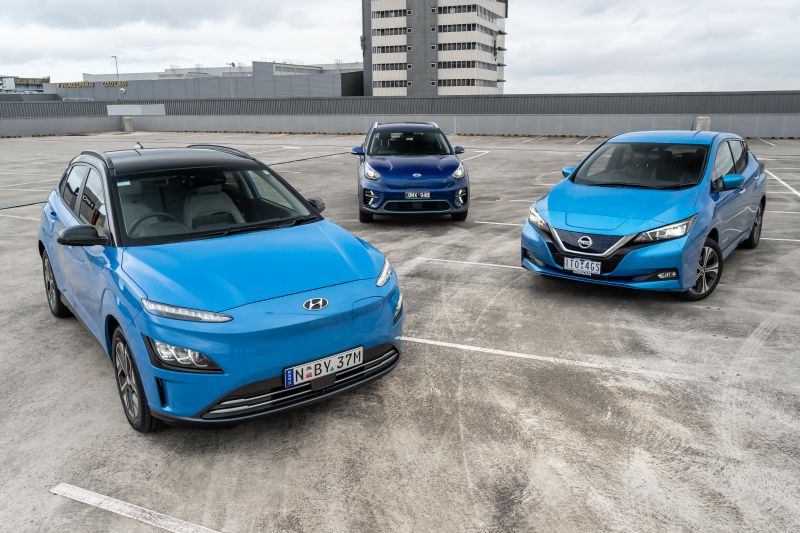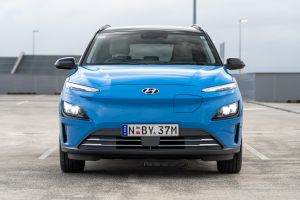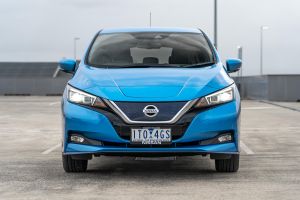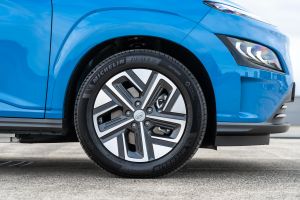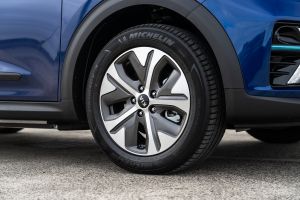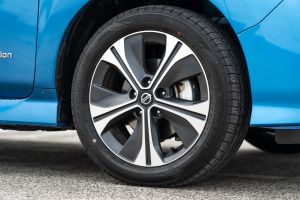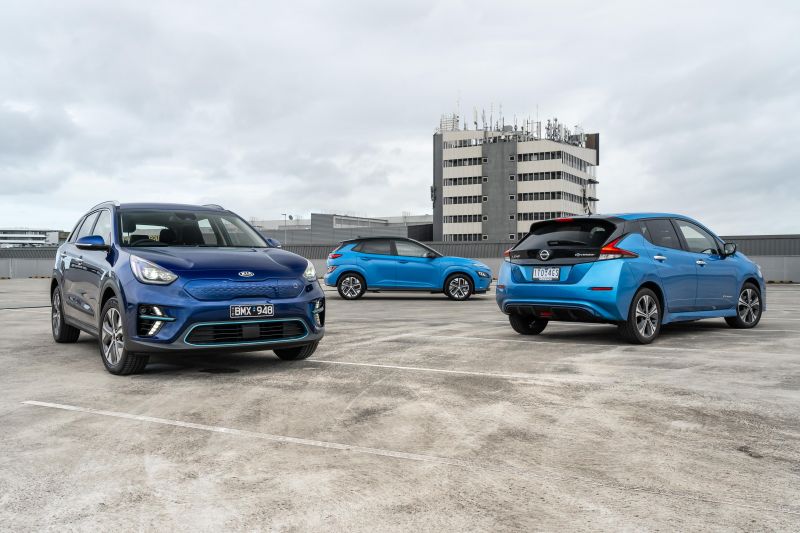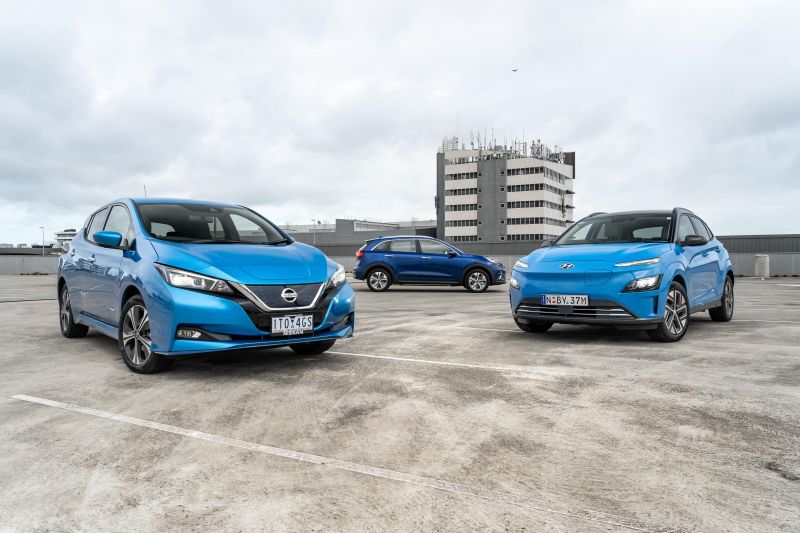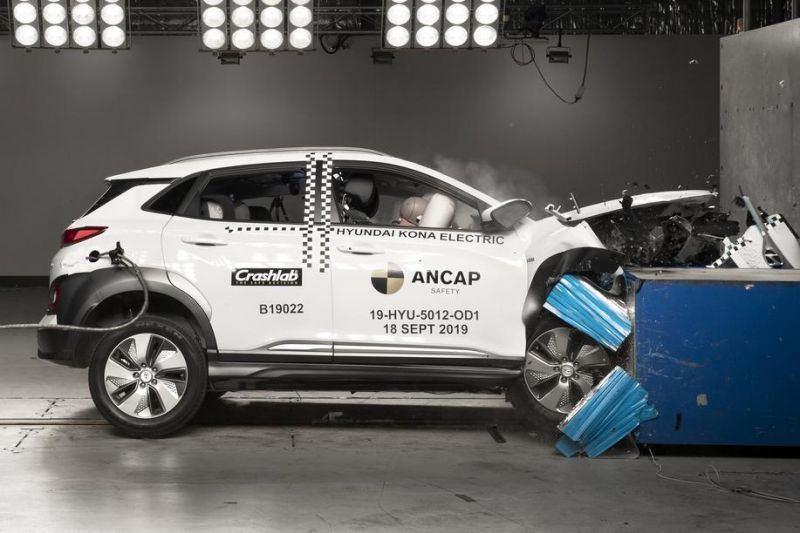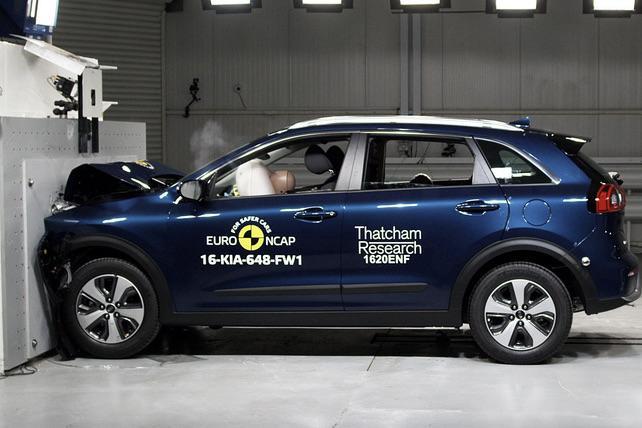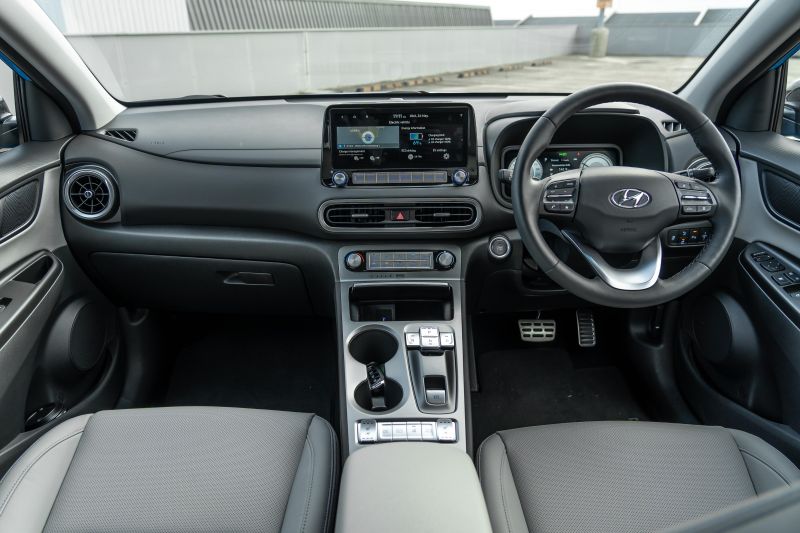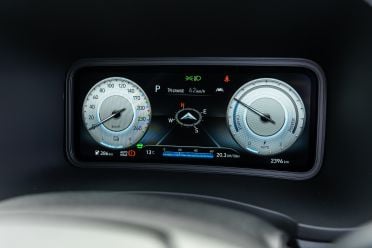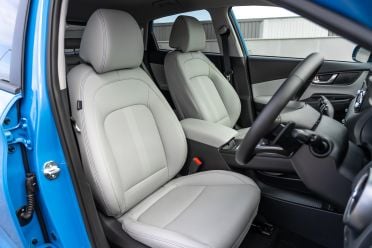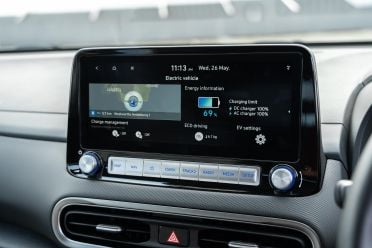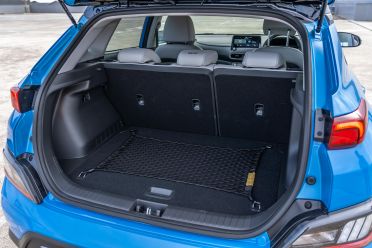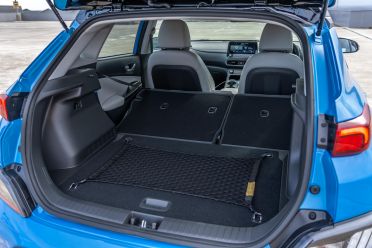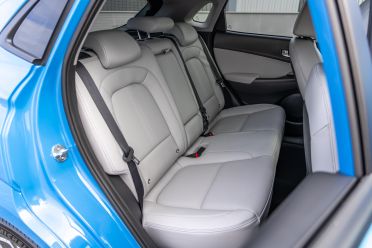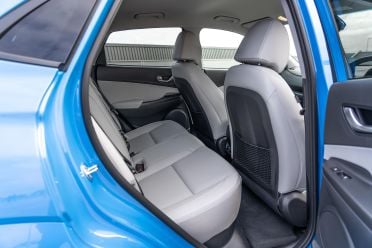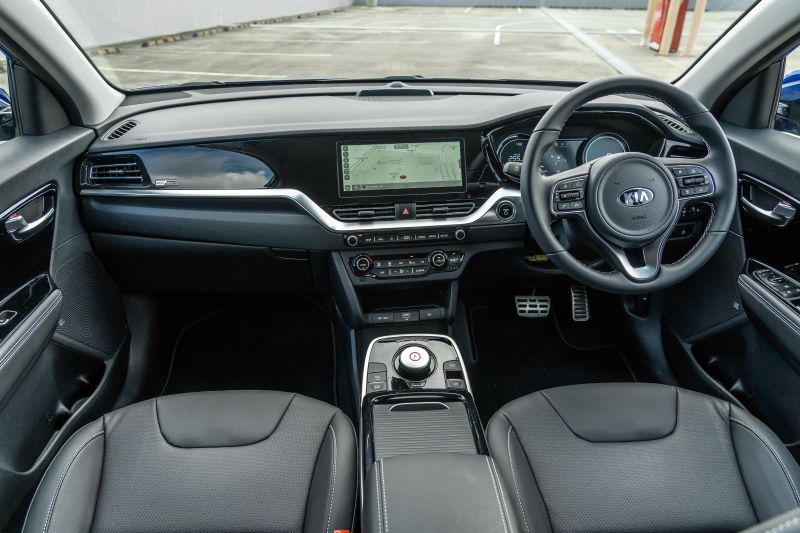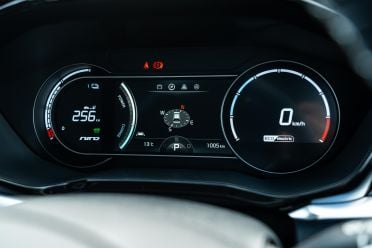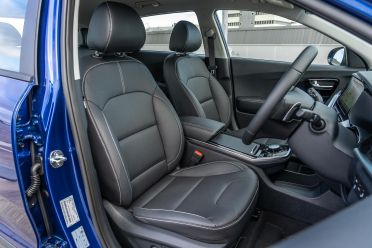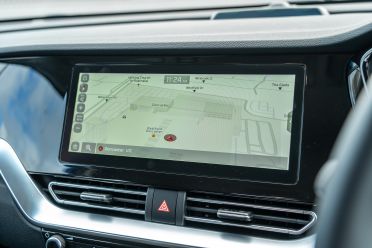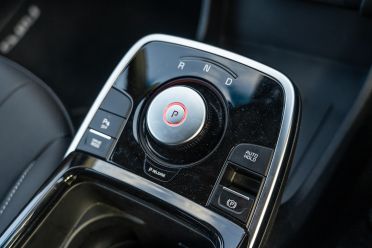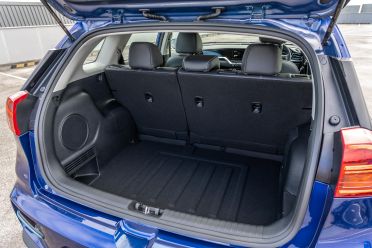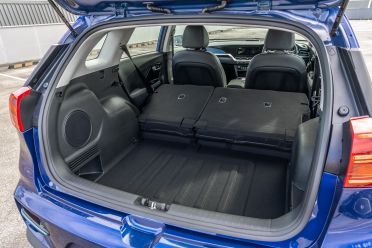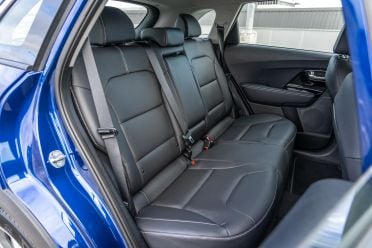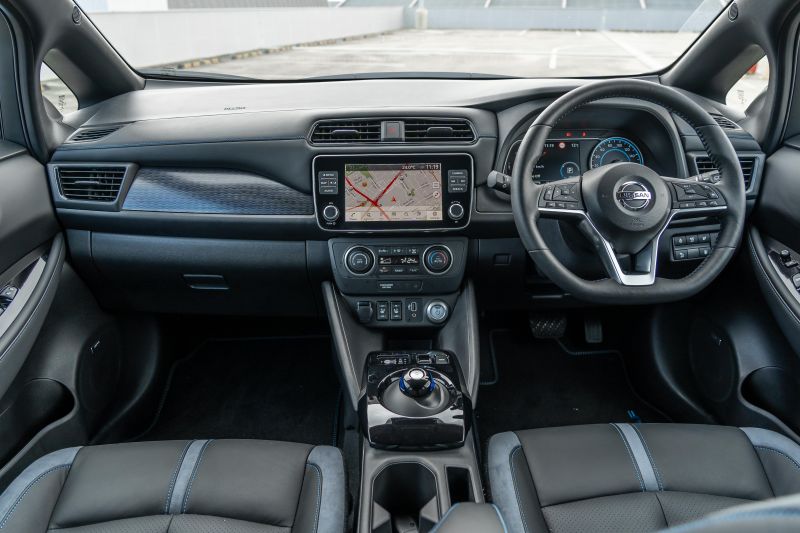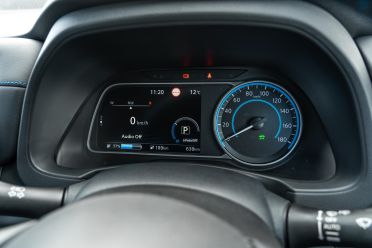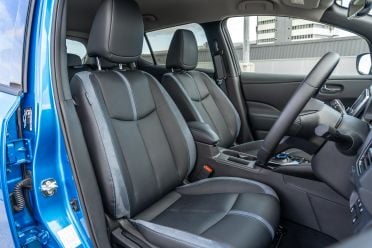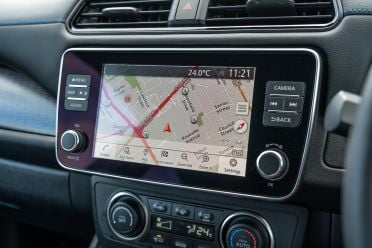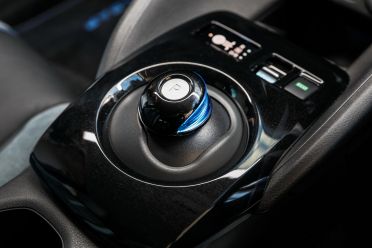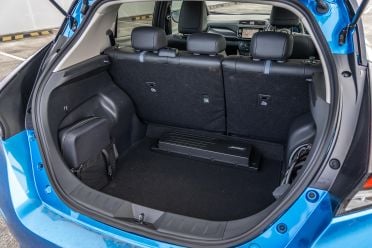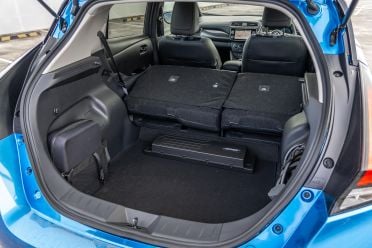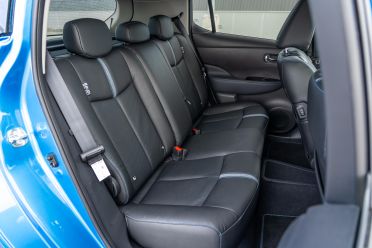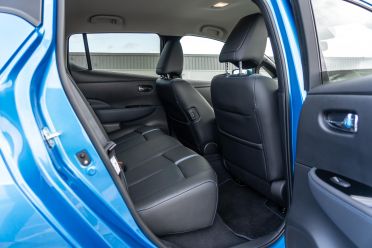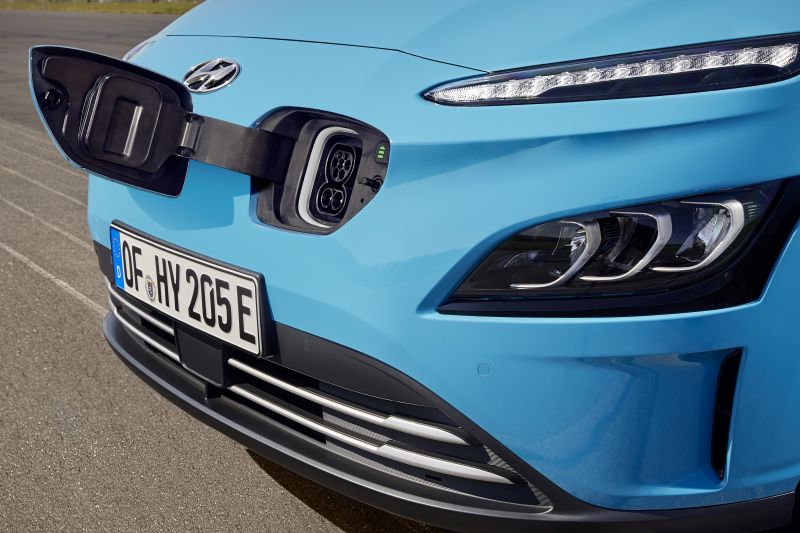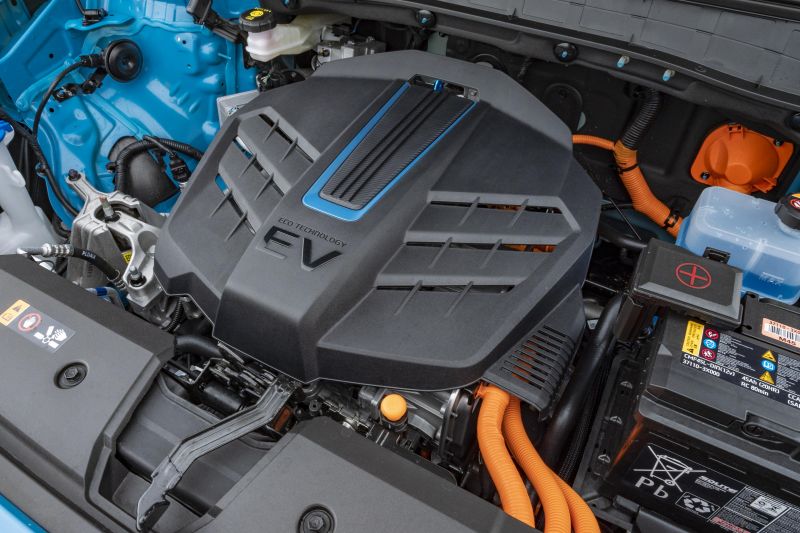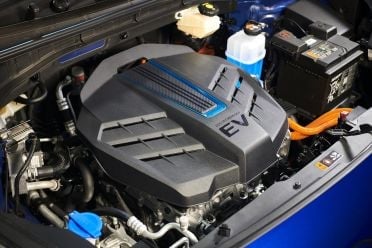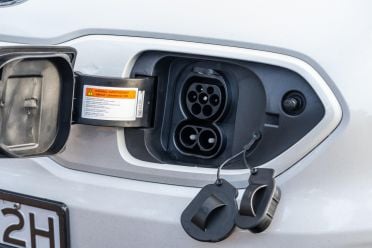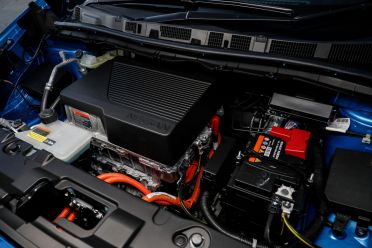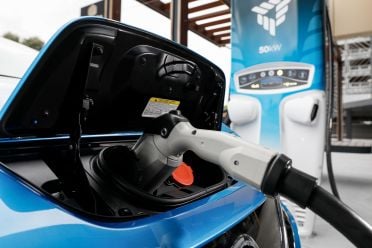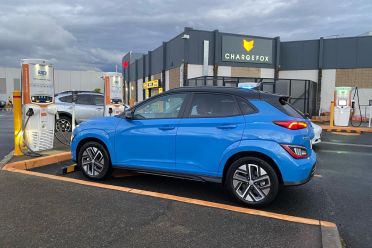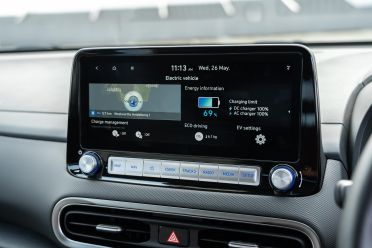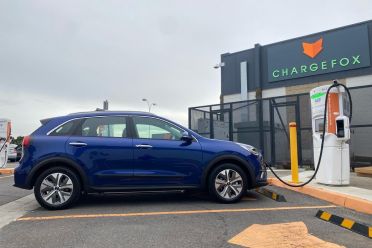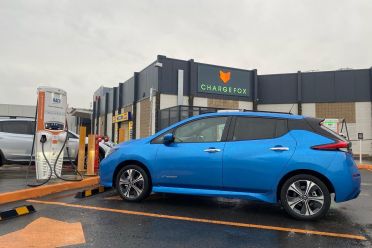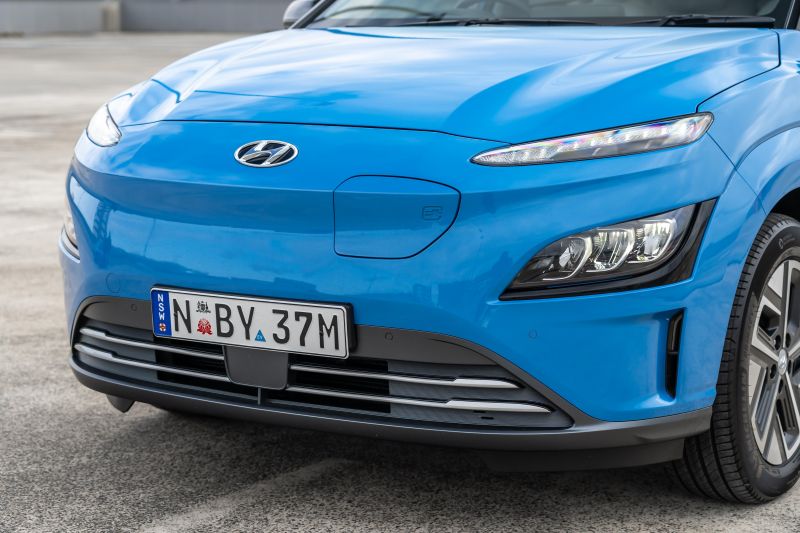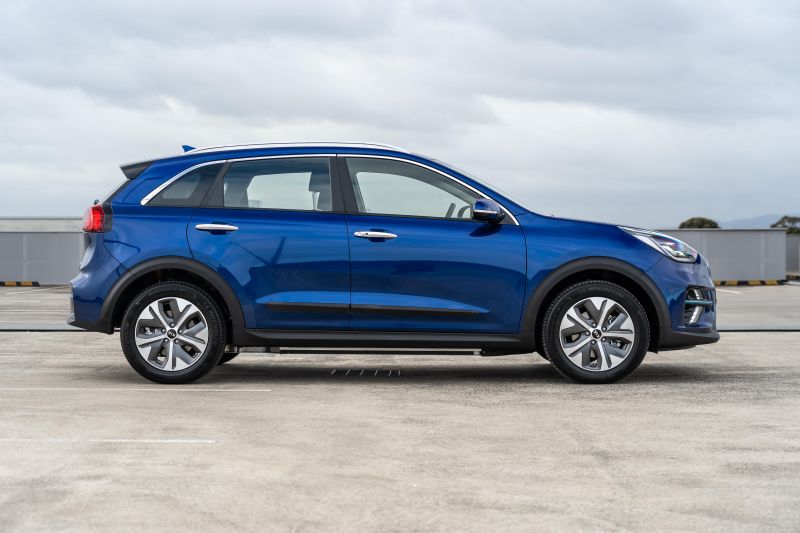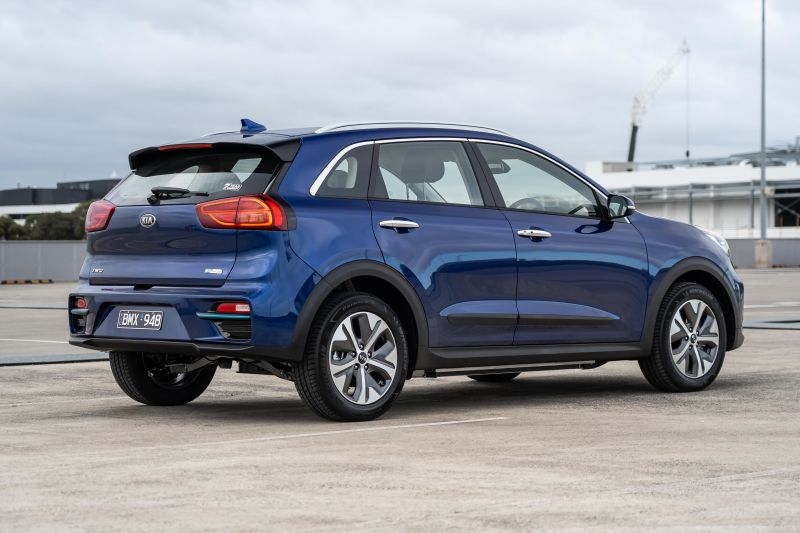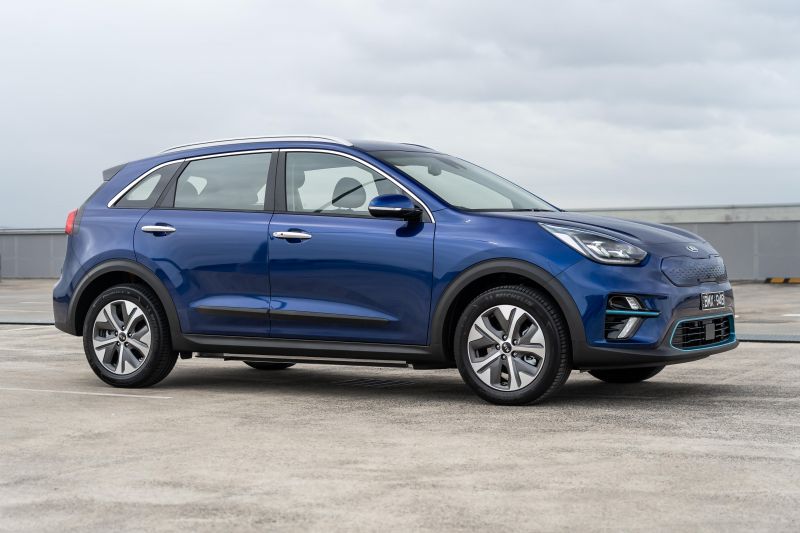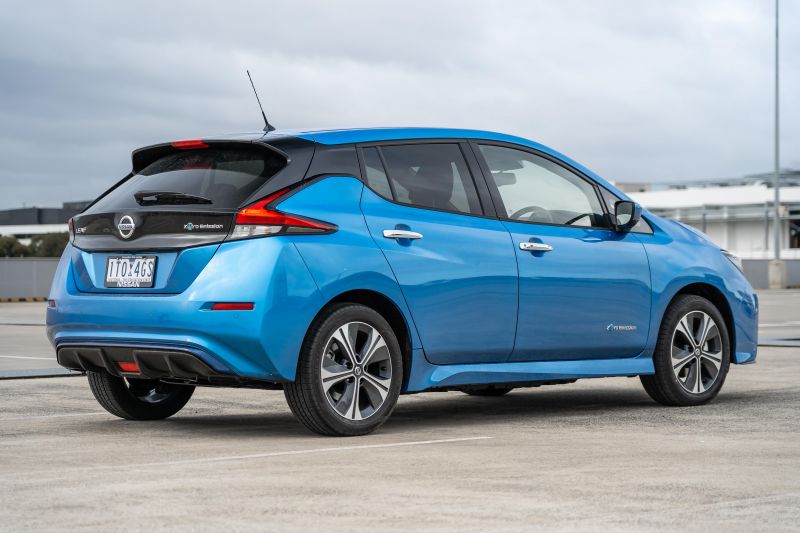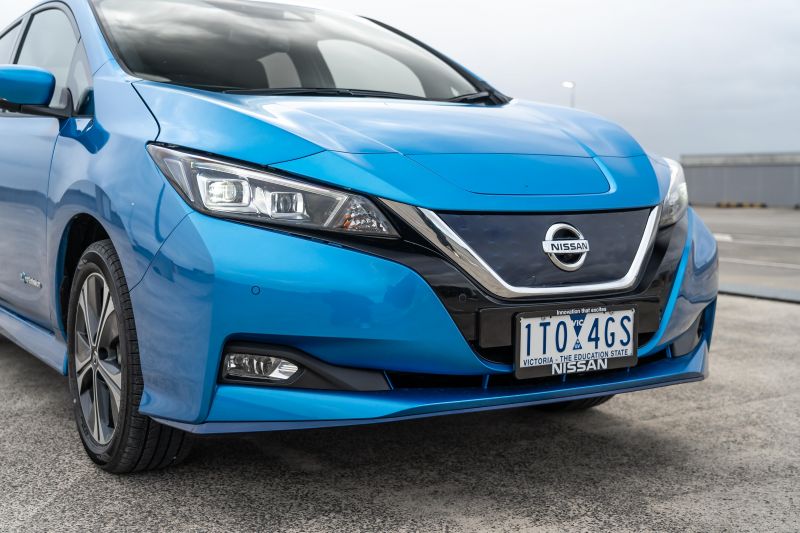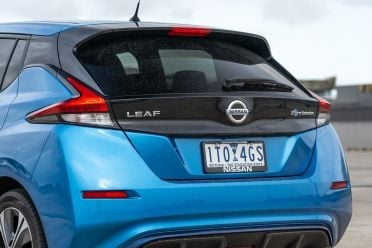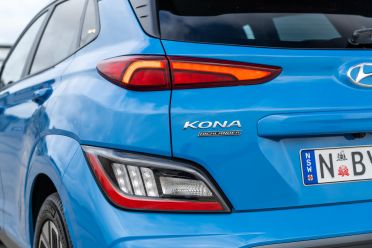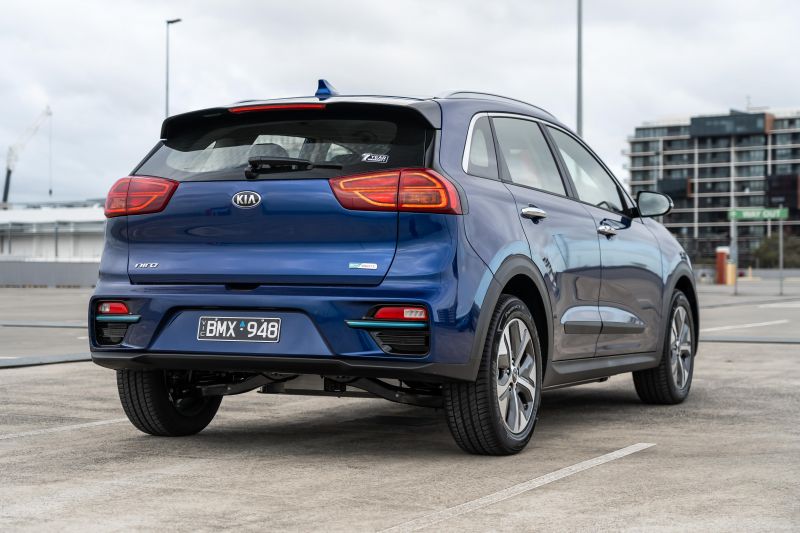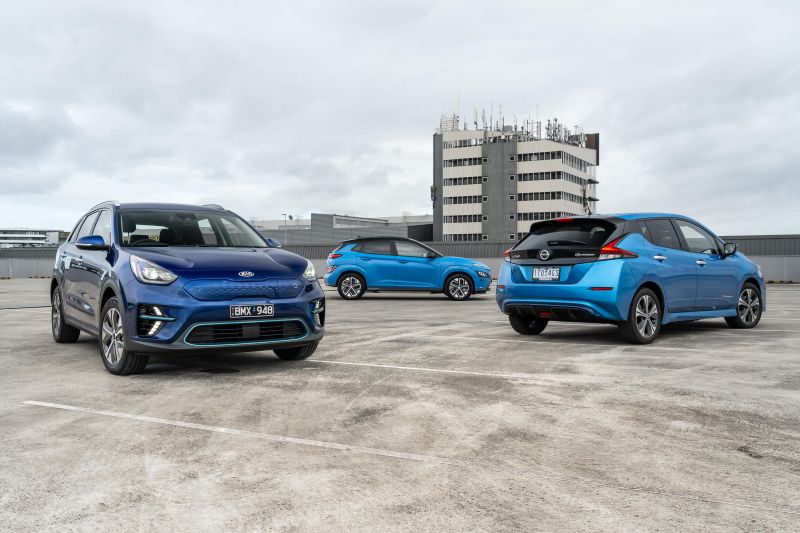Electric car sales are yet to really take off in Australia, but buyers looking to make the switch have more choice now than ever.
And if there’s one thing talking with visitors to our CarExpert Experience Centre has taught me, it’s that people are increasingly interested.
Tesla’s Model 3 is the best-seller and best-known. You can read how we think it stacks up here, and read an owner review from editor Paul here.
But for this feature we’ve gathered three other options that all offer a longer-than-average driving range and relatively accessible prices.
The Hyundai Kona Electric is not a new model per se, but it received an extensive mid-life update earlier in the year that introduced new frontal styling, updated the interior screens, and eked out a bit more driving range.
The Kia Niro arrived shortly afterwards despite nearing the end of its life cycle. It’s not as bold to behold as the sporty Hyundai, but it has more back seat space and a bigger boot for those that’ll find the Kona too pokey.
EV early adopter Nissan is onto its second-generation Leaf, and has just launched a longer-range option called the e+, which has extra battery storage capacity and more power. It’s also the most affordable vehicle here, though none are what you’d call ‘cheap’.
How much?
We’re driving both the Hyundai and Kia options in their respective top-of-the-range forms, while the Nissan Leaf e+ is a single-spec variant.
The Hyundai Kona Electric Highlander costs $66,000 before on-road costs, equivalent to about $71,400 drive-away according to Hyundai’s own public pricing calculator. This is before any State-based incentives.
The Kia Niro EV Sport costs $65,990 before on-road costs, equivalent to $70,990 drive-away. Finally the Nissan Leaf e+ enjoys a price advantage over this other pair at $60,490 before on-road costs or $64,990 drive-away.
We should note though the base (less well-equipped) versions of the two Koreans come closer to matching the Nissan: a Hyundai Kona Electric Elite is $67,200 on the road and a Kia Niro S $67,490 on the road.
To bring you comparison content quickly, we test the vehicles we have access to earliest.
Vehicles tested:
- Hyundai Kona Highlander: $66,000 list price, equal to $71,400 drive-away
- Kia Niro Sport: $65,990 list price, equal to $70,990 drive-away
- Nissan Leaf e+: $60,490 list price, equal to $64,990 drive-away
Some other options price in the ballpark are the Tesla Model 3 Standard Range Plus ($68,000 drive-away) and Mazda MX-30 E35 Astina ($71,000 drive-away), while if you’re content with a smaller car there’s the Mini Cooper SE Classic ($61,500 drive-away).
These prices are all based on a Melbourne postcode and will vary slightly depending on State taxes. No purchase incentives are included.
What do you get?
On the outside all three cars on test have 17-inch alloy wheels, dusk-sensing LED headlights, LED daytime running lights, proximity key fobs, rain-sensing windscreen wipers, and rear parking sensors.
The Hyundai Kona and Nissan Leaf additionally come with rear privacy glass and front parking sensors.
| Model | Hyundai Kona | Kia Niro | Nissan Leaf |
|---|---|---|---|
| Variant | Highlander | Sport | e+ |
| Wheels | 17-inch | 17-inch | 17-inch |
| Tyres | Michelin Primacy 4 | Michelin Primacy 3 | Dunlop Enasave |
| Headlights | LED with dusk sensors | LED with dusk sensors | LED with dusk sensors |
| DRL | LED | LED | LED |
| Privacy glass | Standard | No | Standard |
| Proximity key | Standard | Standard | Standard |
| Auto wipers | Standard | Standard | Standard |
| Sensors | Front and rear | Rear | Front and rear |
On the inside all three have climate control, some variety of leather-like seating, electrochromatic rear-view mirrors, satellite-navigation, Apple CarPlay, Android Auto, a digital radio receiver, and a branded sound system.
The Hyundai Kona comes with seat heating (front and rear) and ventilation (front), powered driver’s seat adjustment, a 10.25-inch touchscreen, and a head-up display (HUD). The Kia Niro offers the powered seat and 10.25″ touchscreen, but not the rest.
The Leaf offers heated front and rear seats and adds a 360-degree camera view, but also has a manually operated driver’s seat and a smaller 8.0-inch touchscreen.
| Model | Hyundai Kona | Kia Niro | Nissan Leaf |
|---|---|---|---|
| Variant | Highlander | Sport | e+ |
| Climate control | Single-zone | Single-zone | Single-zone |
| Seat trim | Real and faux leather | Faux leather | Leather and Ultrasuede |
| Seat heating | Standard | No | Standard |
| Seat cooling | Standard | No | No |
| Seat adjust | Powered | Powered | Manual |
| HUD | Standard | No | No |
| Touchscreen | 10.25-inch | 10.25-inch | 8.0-inch |
| Sat-nav | Standard | Standard | Standard |
| CarPlay and Android | Standard | Standard | Standard |
| Digital radio | Standard | Standard | Standard |
| Sound system | Harman Kardon | JBL | Bose |
| Park camera | Reverse | Reverse | 360-degree |
What colours are offered?
You might have noted the ubiquity of blue among our test cars. But fear not! There are choices.
Hyundai: Dive in Jeju Blue, Atlas White, Surfy Blue ($595 extra), Galactic Grey ($595 extra), Dark Night ($595 extra), Pulse Red ($595 extra).
Kia: Clear White, Snow White ($520 extra), Aurora Black ($520 extra), Silky Silver ($520 extra), Runway Red ($520 extra). Yacht Blue ($520 extra).
Nissan: Arctic White, Magnetic Red ($595 extra), Pearl Black ($595 extra), Platinum ($595 extra), Gun Metallic ($595 extra), Vivid Blue ($595 extra), Ivory Pearl (two-tone only, $995 extra). Magnetic Red, Gun Metallic and Vivid Blue are also available as two-tone options with a black roof for $995.
Are they safe?
All come with autonomous emergency braking (AEB), lane departure warning, some form of lane keeping aid (steering in the Hyundai and Kia, selective wheel braking in the Nissan), blind-spot monitoring, rear cross-traffic alert, adaptive cruise control, and a driver attention monitor.
All have dual front, front-side, and full curtain airbags. The Kia adds a driver’s knee bag. Each comes with back-seat ISOFIX and top-tether child-seat attachment points.
| Model | Hyundai Kona | Kia Niro | Nissan Leaf |
|---|---|---|---|
| Variant | Highlander | Sport | e+ |
| Airbags | 6 | 7 | 6 |
| AEB – forward, with alert | Cars, pedestrians, cyclists | Cars, pedestrians, cyclists | Cars, pedestrians |
| Lane-departure alert | Standard | Standard | Standard |
| Active lane-keeping aid | Steering | Steering | Braking |
| Blind-spot monitor | Standard | Standard | Standard |
| Rear cross-traffic alert | Standard | Standard | Standard |
| Adaptive cruise control | Standard | Standard | Standard |
| Driver monitor | Standard | Standard | Standard |
Hyundai:
The Kona Electric carries over the combustion-engined model’s five-star ANCAP safety rating achieved in 2017. The overall score is 35.97 out of 37.00.
Kia:
While the Niro Hybrid and PHEV have five-star ANCAP crash scores with a 2016 date stamp, the EV remains unrated. With a brand new Niro on the way in 2022, this generation will not be re-tested.
Nissan:
The Leaf has a five-star ANCAP rating based on 2018 tests conducted by Euro NCAP, though technically this only applies to the 40kWh version tested.
What are they like inside?
While it may not appear so at first glance, the Leaf hatchback is actually a bigger vehicle than the two Korean SUVs: 4490mm long versus 4375mm for the Kia and 4205mm for the diminutive Hyundai.
The Nissan and Kia’s 2700mm wheelbases are 100mm longer than the Hyundai’s, meaning more cabin space should be in the offing. The Kia’s 451-litre boot is larger than the Nissan’s 405L space and dwarves the Hyundai’s 332L.
Hyundai:
The Kona’s cream leather seats with heating and ventilation stand out from the pack, as does its large fully digital instrument display with a ton of menus that changes colour based on your selected driving mode. This is augmented by the only head-up display (HUD) and wireless phone charger on test.
The centre 10.25-inch touchscreen is placed up nice and high and comes with helpful silver buttons and knobs for easy access to shortcuts. Hyundai’s UI lets you view multiple menus concurrently, and the processing power and graphics are both pretty sharp.
Functions include software that tracks your state of charge, quality navigation with charging locations listed, and a Sounds of Nature system that sends ambient noise through the cabin. The ambient footwell lighting is another nifty feature.
Rather than a gear shifter the Kona EV uses four buttons, made possible by the drive-by-wire system. It’s intuitive and saves space, and there’s a large open section that runs underneath.
Build quality is solid though the materials feel more suited to a $30,000 car – which is precisely what this is, once you strip out the EV battery.
In terms of back seat space, it’s last for headroom and legroom. Fine for kids or smaller adults, but the least practical. Same goes for the boot which, at 332L, is the smallest here. There’s a tyre-repair kit under the floor and a storage net.
Kia:
The seats are nicely trimmed and comfortable, and have electric adjustment for the driver, but are neither heated nor ventilated. The steering wheel may have the old Kia logo on its centre cap (that’ll change later this year), but it’s nicely trimmed and stitched.
The trip computer is flanked by digitised speedo and tacho, and looks modern, though not as brash as the Hyundai’s setup. It also lacks the Kona’s HUD. The 10.25-inch centre touchscreen is embedded in the fascia, and functions very similarly to the Hyundai’s.
The Niro does seem to have a drabber colour palette and too much dust-drawing glossy black trimming. Storage options are plentiful, with the centre tunnel alone offering a console plus a large closing cubby with deployable cup holders, and a two-tier open stowage area below.
Like the Hyundai it forgoes any sort of traditional gear shifter. Instead it has a rotary dial that you move left and right to select Drive, Reverse, and Neutral. A button in the centre puts the car in Park.
The back seats are good, with space for my 194cm frame behind my preferred driving position. I ferried around four people a few times with no complaints, something I wouldn’t attempt in the Kona lightly.
The boot is a spacious 451 litres, which is bigger than the Niro PHEV and HEV, and larger than any rival here. Below the floor is a tyre-repair kit only, as with the Hyundai.
Nissan:
Positives first: the Leaf’s build quality is very solid, the driver’s instrument display comprises a basic analogue speedo and TFT trip computer but works intuitively, and the blue-stitched leather and Ultrasuede seats are nicely trimmed.
The centre touchscreen takes less real estate than the Hyundai and Kia systems, but the mapping is clear, the voice control works, and it alone offers that above-view camera.
It doesn’t offer as much storage along the centre tunnel as the other pair though, it rocks an antiquated foot-operated parking brake, has manual seat adjustment only, and lacks telescopic steering wheel adjustment.
Fittingly, the Leaf also uses an unusual gear shifter, in the form of a small toggle device. It’s installed near the rocker switch which controls the e-pedal brake-regen enhancer.
While back-seat toe room is tight, headroom and legroom levels are sufficient for outboard passengers of my height. And the Leaf also has heated rear seats.
The boot is deep and stores 405L, though the Bose sub and cables packed behind each wheel-well indent rob you of space. There’s a large step over the rear seat backs when they’re folded down. Happily, the Leaf has a space-saver spare wheel.
| Model | Hyundai Kona | Kia Niro | Nissan Leaf |
|---|---|---|---|
| Variant | Highlander | Sport | e+ |
| Length | 4205mm | 4375mm | 4490mm |
| Width | 1800mm | 1805mm | 1788mm |
| Height | 1570mm | 1570mm | 1540mm |
| Wheelbase | 2600mm | 2700mm | 2700mm |
| Boot | 332L | 451L | 405L |
What’s under the bonnet?
Hyundai and Kia:
This pair use the same drivetrain. Both have an under-bonnet motor making 150kW of power and a beefy 395Nm of torque. Power is sent to the front wheels in both, through a single-speed reduction gear.
Both have a 64kWh lithium-ion and liquid-cooled battery pack, charged through ports fitted where the grille would go in a combustion model.
At 1743kg the Hyundai is 48kg lighter than the Kia, which partly explains why its 7.6-second 0-100km/h claim edges the Kia’s by two-tenths.
Hyundai’s WLTP driving range of 484km is 29km greater than the Kia’s, much of which is down to its lower-rolling resistance Michelin Primacy 4 tyres.
Nissan:
The Leaf e+ has a 160kW and 340Nm under-bonnet motor (up 50kW/20Nm over the entry Leaf’s). Power is sent to the front wheels through a single-speed reduction gear.
While the base Leaf has a 40kWh lithium-ion battery pack, the Leaf e+ has a 62kWh capacity. Improved cell structure means more energy density, so that extra 22kWh of storage potential doesn’t come at the cost of a much bulkier pack.
There’s no liquid cooling, though Nissan claims the laminated-structure cells have a high enough level of cooling performance and its warranty reflects as much.
Nissan claims a sprightly 6.9-second 0-100km/h time for the Leaf e+, making it the quickest car on the spec sheet here. But its driving range on the WLTP test of 385km is the shortest here.
On a side note, did you know that Nissan’s Casting Plant in eastern Melbourne makes various Leaf components for export? Every Leaf sold here (and many other places) has some parts wearing a little kangaroo stamp. I find that admirable.
| Hyundai Kona | Kia Niro | Nissan Leaf | |
|---|---|---|---|
| Battery | 64kW | 64kW | 62kWh |
| Voltage | 356V | 356V | 350V |
| WLTP range | 484km | 455km | 385km |
| Consumption | 147Wh/km | 159Wh/km | 180Wh/km |
| Drive wheels | Front | Front | Front |
| Motor power | 150kW | 150kW | 160kW |
| Motor torque | 395Nm | 395Nm | 340Nm |
| 0-100km/h claim | 7.6 sec | 7.8 sec | 6.9 sec |
| Vehicle weight | 1743kg | 1791kg | 1736kg |
| Onboard charger | 7.2kW | 7.2kW | 6.6kW |
| AC charge port | Type 2 | Type 2 | Type 2 |
| DC charge maximum | 100kW | 100kW | 100kW |
| DC charge port | CCS | CCS | CHAdeMO |
How do they charge?
For all three, if you have off-street parking you should get an AC wallbox with Type 2 socket installed. These allow you to charge up overnight.
To be specific, the Hyundai and Kia have 7.2kW onboard chargers and their batteries will go from 10 per cent to full in about 9.5 hours. The Leaf has a 6.6kW onboard charger and will be charged after around 11.5 hours.
You don’t need to fully charge every time by the way. You can zap and move.
Conveniently, Hyundai sells Delta home chargers for $1995 including fitment, Kia can arrange an EVSE wallbox for about $3000, and Nissan Australia partners with JET Charge (featured here) to install a Schneider EVlink Smart Wallbox.
If you need to charge on the run, all can take DC power. The Hyundai and Kia have CCS charging points while the Nissan uses a heftier CHAdeMO point.
You should set aside around 90 minutes to get any of this trio from the empty light to 80 per cent charge on a 50kW DC charger. If you can find a higher-capacity charger then you’ll get this cycle time down to 40 to 50 minutes.
They’ll typically only draw down 60kW to 70kW (all claim 100kW peaks) but you can still use even the 350kW ultra-rapid chargers.
Some rules of thumb: driving range drops when it’s cold and when you drive with heavy use of the accelerator. Energy usage isn’t a fixed figure.
How do they drive?
Hyundai:
The motors are too powerful for the front wheels at times. Even on a dry road you’ll chirp the tyres when you get off the mark, and again as you accelerate towards 100km/h. But the ESC tune is subtle, and there are modes to dull the throttle (eco) as well as sharpen it (sport).
Accelerating in an EV is smooth since there are no gears, and mostly silent except for a subtle whining. The regenerative brakes have various degrees of resistance available, controlled by the paddle shifters. Pull the left paddle and hold, and you can also bring the vehicle to a halt.
The suspension make-up is MacPherson struts up front and multi-link at the rear, and the Kona benefits from an Australia-specific suspension tune. The ride quality is pretty well sorted, with the springs and dampers calibrated to handle all that extra battery weight on compression.
The steering is well weighted and the body control through corners quite good. The traction issue and the added battery weight (low mounted, at least) take the edge off dynamism, but the Kona is still the sharpest drive here in my opinion.
The downside is noise, vibration and harshness (NVH) suppression from the tyres, with a higher decibel readout evident in the Kona than the others.
- Claimed energy use: 14.7kWh/100km
- My energy use: 15.8kWh/100km
- My 0-100km/h: 7.9 seconds
- Cabin noise at 100km/h on tarmac: 71dB
Kia:
Unsurprisingly the Niro feels similar to the Kona off the mark, though’s its a few tenths slower. The same smooth and silent acceleration, low-speed hum, chirping tyres, and on throttle lift the same paddle-operated brake-regeneration mode adjustments.
The dynamic setup comprises strut front suspension and multiple linkages at the rear, passive dampers, motor-driven steering, and Michelin Primacy 3 tyres (the Kona has Michelin Primacy 4s).
Unlike all other Kias, the Niro doesn’t benefit from an Australia-specific spring/damper/bar tune, instead using the European setup. The stated reason is that the Niro is a niche car here that’s late in its life cycle, so why spend all that engineering budget?
It’s still a pretty comfy car, able to round off smaller road imperfections, while the steering is nicely weighted and responsive, and the 68dB road-noise reading I got at 100km/h impressed.
Still the Niro can’t entirely hide the added EV weight, in that at higher speeds and through corners, it doesn’t feel overly light on its feet and does feel ever so slightly jarring over big potholes or expansion joints.
- Claimed energy use: 15.9kWh/100km
- My energy use: 16.1kWh/100km
- My 0-100km/h: 8.1 seconds
- Cabin noise at 100km/h on tarmac: 68dB
Nissan:
While Nissan claims a rapid 6.9-second 0-100km/h time, I didn’t get under 8.0 seconds in my own testing. Given the on-paper outputs this makes sense.
The Leaf feels at its happiest driving around town, thanks to the upright and high driving position, light steering, and plentiful poke to 60km/h for in-town gap hunting, before tapering off like the others.
Suspension-wise the Leaf (struts up front, torsion/twist beam at rear) offers a nicely controlled primary ride quality with an ability to isolate you from sharp hits like speed bumps or corrugated roads.
It’s no hot hatch in corners despite the straight-line zip, and the lack of steering wheel reach adjustment and the foot-operated parking brake aren’t exactly highlights. While it’s an urban car, the dB reading at 100km/h was equal best.
Nissan’s ‘e-pedal’ only has two settings (on or off) but the way the Leaf comes to a halt of its own accord when you lift off throttle is highly intuitive. You really do rarely need to bother with the conventional brakes, which is good because the pedal offers little in the way of foot feel or discernible ‘bite’ points.
Finally, Nissan’s buzzing and braking lane-keeping aid feels old hat next to the Korean twins’ steering-based corrective systems.
- Claimed energy use: 18kWh/100km
- My energy use: 18.4kWh/100km
- My 0-100km/h: 8.0 seconds
- Cabin noise at 100km/h on tarmac: 68dB
Cost of ownership
All three car-makers here offer separate warranty terms for the battery pack and the rest of the vehicle. Hyundai and Nissan provide five-year and unlimited-kilometre warranties on all aspects of the Kona and Leaf bar their batteries, while Kia provides seven years cover.
In terms of the battery warranties, Hyundai and Nissan cover you for eight years or 160,000km, whereas Kia covers the battery and motor for seven years or 150,000km. The general rule of thumb is that up to 25 per cent battery range degradation is acceptable within this window.
Basic service costs at the time of writing, listed on each brand’s site, are as follows. be sure to make sure there’s one of the brands’ accredited EV service centres near you.
Hyundai Kona Electric: Five years servicing at 12-month or 15,000km intervals: $825.
Kia Niro Electric: Five years servicing at 12-month or 15,000km intervals: $1728.
Nissan Leaf e+: Five years servicing at 12-month or 20,000km intervals: $1413.
CarExpert’s Pick
All three are flawed vehicles, it has to be said. None are as affordable as they need to be, to really get traction in the sales race.
The Hyundai Kona Electric has the boldest design, most up-to-date cabin, sharpest handling and longest range. But it also has the tightest back seats and smallest boot.
The Kia Niro misses out on a few features next to the Hyundai at more or less the same price, and is not as energy efficient. But it has a more more practical cabin, and its steady and sensible design will appeal to many.
The Nissan Leaf is the biggest vehicle with the best back seats (as roomy as the Kia’s and heated like the Hyundai’s), is about $6000 cheaper than the others, and has the great e-pedal. But the cabin feels a bit dated and range is shortest here.
I’ve actually made the argument that if you’re in the market for any of this trio, you should buy the Tesla Model 3. At least for the time being.
But there’s a good argument the Kia Niro takes the best attributes of the Hyundai (range, infotainment) and Nissan (back seat and boot space) with the least amount of compromise.
MORE: Hyundai Kona news, reviews, comparisons and videos
MORE: Kia Niro news, reviews, comparisons and videos
MORE: Nissan Leaf news, reviews, comparisons and videos


